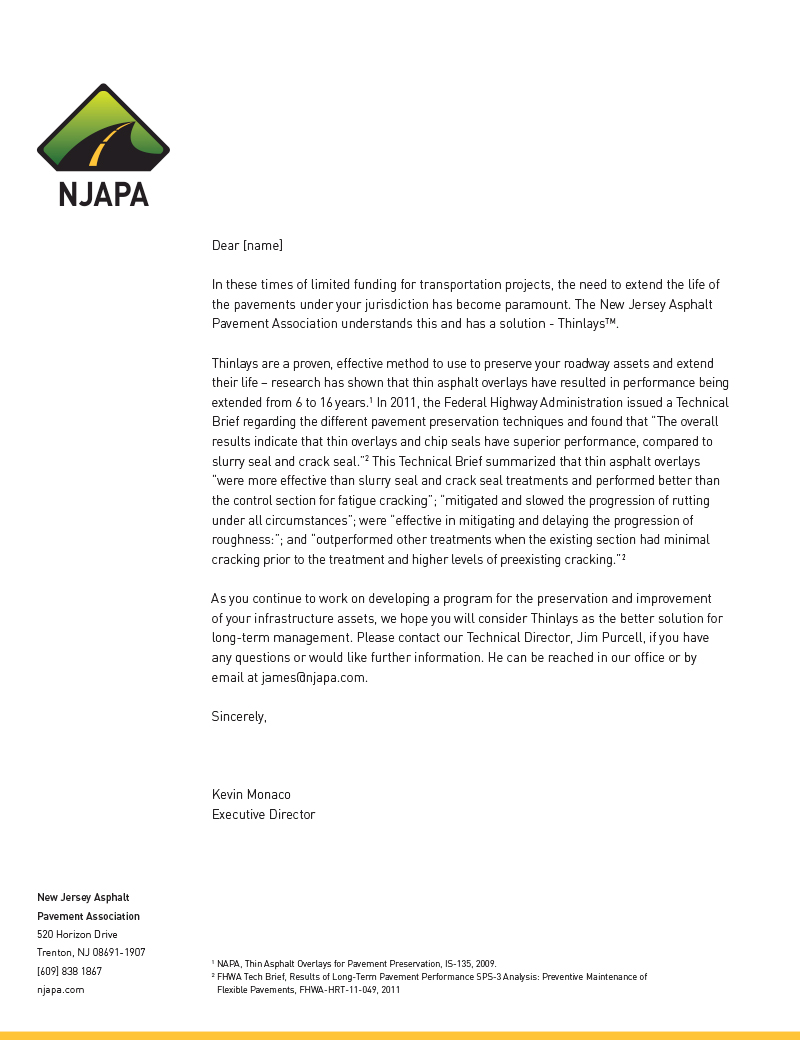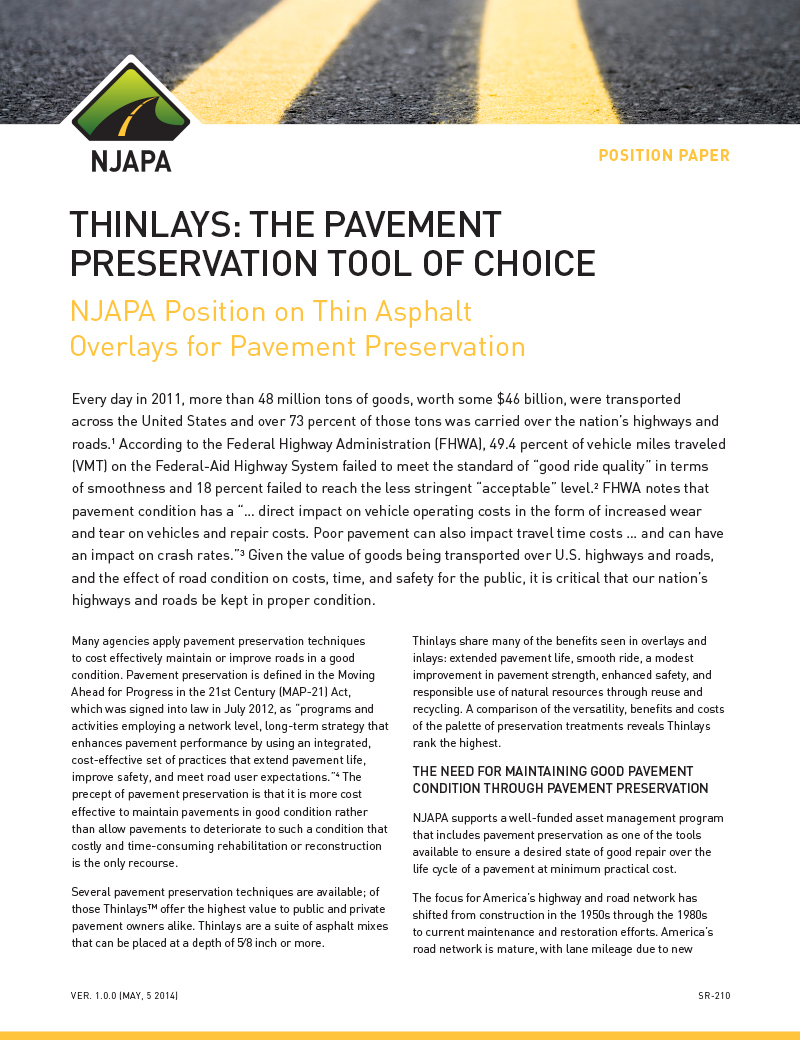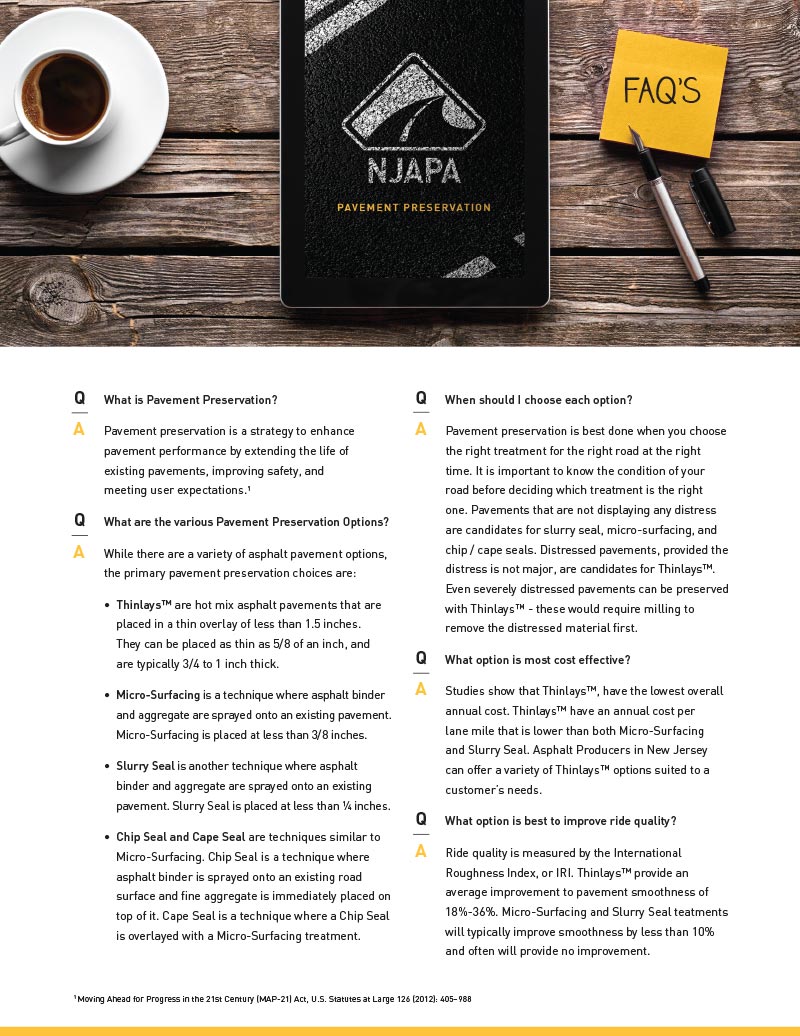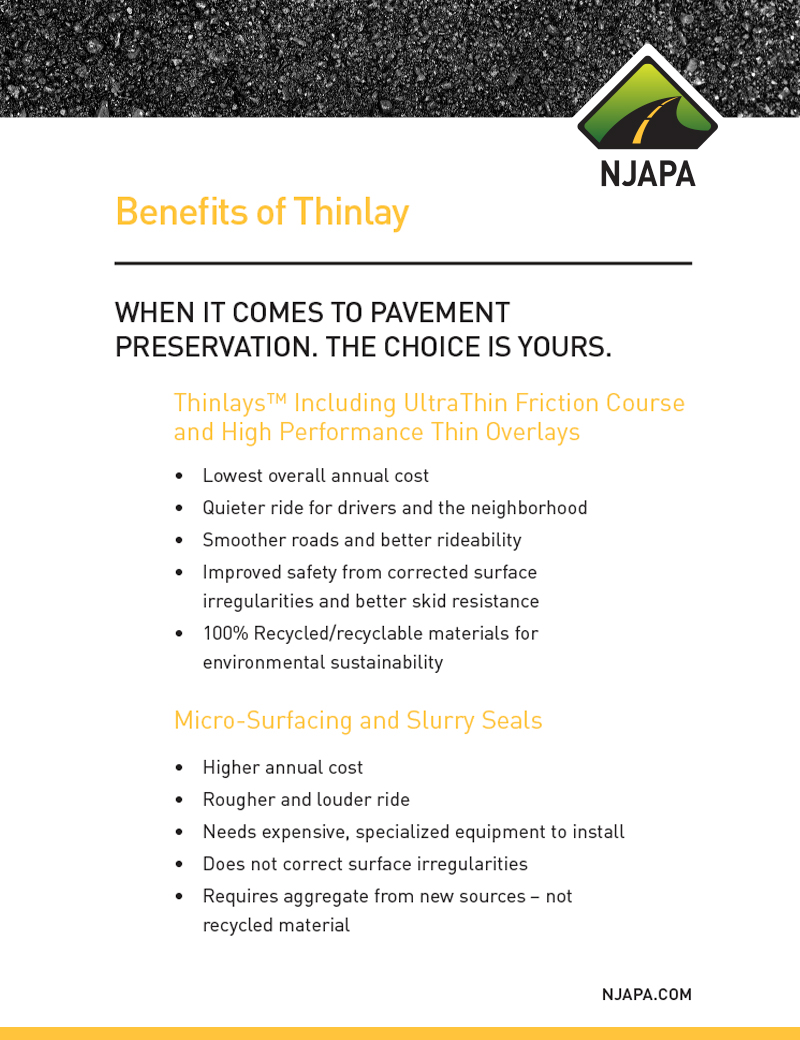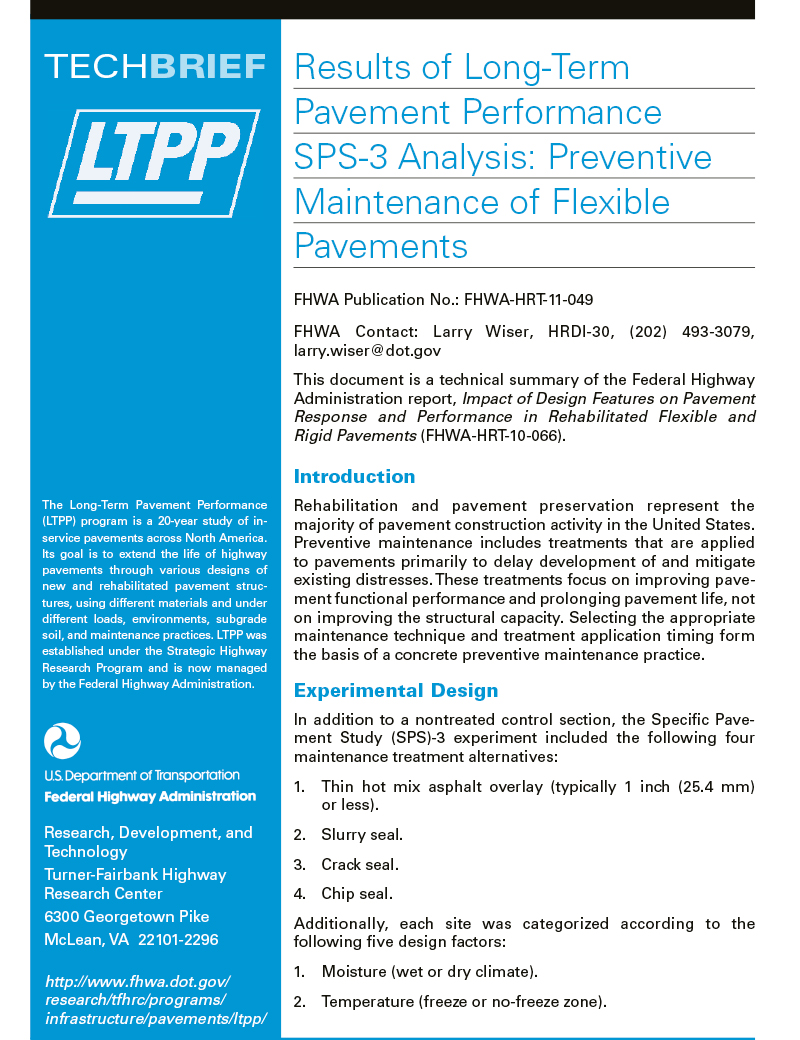Thin is in when it comes to pavement preservation. Thinlays™ are the new generation of thin-lift asphalt overlays which can provide improved ride quality, reduce pavement distresses, maintain surface geometrics, reduce noise levels, reduce life-cycle costs, and provide long-lasting service. It’s safe, smooth, durable and can potentially add 10+ to the lifecycle of the existing pavement. Learn more.
Benefits of Thinlays Toolkit
NJAPA Positions
Thinlays are a proven, effective method to use to preserve your roadway assets and extend their life – research has shown that thin asphalt overlays have resulted in performance being extended from 6 to 16 years.1 In 2011, the Federal Highway Administration issued a Technical Brief regarding the different pavement preservation techniques and found that “The overall results indicate that thin overlays and chip seals have superior performance, compared to slurry seal and crack seal.”2 This Technical Brief summarized that thin asphalt overlays “were more effective than slurry seal and crack seal treatments and performed better than the control section for fatigue cracking”; “mitigated and slowed the progression of rutting under all circumstances”; were “effective in mitigating and delaying the progression of roughness:”; and “outperformed other treatments when the existing section had minimal cracking prior to the treatment and higher levels of preexisting cracking.”2
- Surface distresses and structural adequacy of the road must be evaluated prior to using pavement preservation treatments, including Thinlays.
- Thinlays for pavement preservation offer economic, engineering, and sustainability benefits.
- Thinlays should be considered as part of any pavement preservation program.
- Consideration should be given to protecting the pavement structure and the benefits of creating a Perpetual Pavement, particularly for thinner lower volume pavements, through the strategic application of Thinlays over time (staged construction).
- Selection of Thinlays should include a review of the economic and engineering suitability.
- Restrictions that prohibit the use of Thinlays due to possible addition of structural capacity and without technical basis should be removed from specifications and guidance.
- Milling prior to overlay should be allowed, and in some cases encouraged, to allow removal of surface distresses and provide optimum smoothness for long-term performance.
- The use of warm-mix asphalt (WMA) should be allowed for the construction of Thinlays.
- The use of reclaimed asphalt pavement (RAP) and/or reclaimed asphalt shingles (RAS) should be permitted for Thinlays.
Learn More About the Benefits of Thinlays
Contact Jim Purcell, NJAPA Technical Director, for more information or to schedule an in-person presentation.
Request Print Samples
1 NAPA, Thin Asphalt Overlays for Pavement Preservation, IS-135, 2009.
2 FHWA Tech Brief, Results of Long-Term Pavement Performance SPS-3 Analysis: Preventive Maintenance of Flexible Pavements, FHWA-HRT-11-049, 2011

